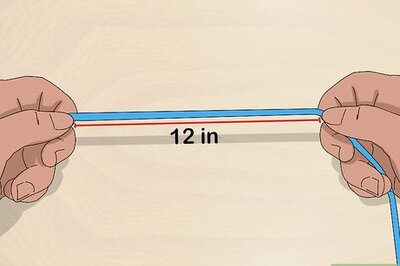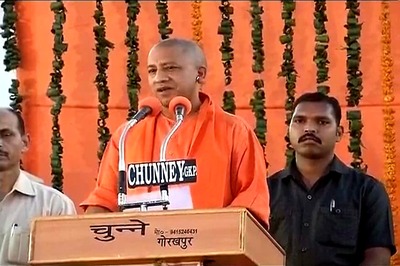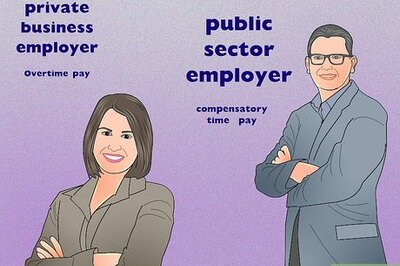
views
A day after exit polls predicted a clean sweep for the Bharatiya Janata Party in the Lok Sabha elections, Samajwadi Party chief Akhilesh Yadav met his ally and BSP supremo Mayawati on Monday.
Exit poll results on Sunday showed that the BJP, whose spectacular victory in Uttar Pradesh in 2014 had propelled it to a brute majority in the Lok Sabha, is predicted to once again put up a strong show in the electorally crucial state with the BSP-SP-RLD alliance failing to work to its maximum potential.
The state, however, has thrown up confusing numbers from various pollsters. While some have given an edge to the mahagathbandhan, the others have predicted BJP way ahead in UP. On the other hand, the exit polls have shown BJP climbing down to 71 seats from 80 it had won in the state in last general polls.
While Times Now CVoter has given BJP+ 38 seats in UP, gathbandhan 40 seats, and Congress two seats; ABP Nielsen has predicted the gathbandhan winning 56 seats, BJP 22, and Congress winning 2 seats.
News18 IPSOS has predicted BJP and allies getting between 60 and 62, SP-BSP-RLD getting between 17 and 19 seats, and Congress getting between one-two seats. NDTV’s poll of polls has predicted BJP+ winning 46 seats, the alliance winning 31 seats, and Congress winning three.
Speaking to the media after the meeting, which lasted for about an hour, Akhilesh said he would discuss election-related issues after May 23. BSP national general secretary Satish Chandra Mishra was also present in the meeting. Sources said the two leaders discussed the strategy to be adopted in light of possible scenarios that may emerge after the results.
In Uttar Pradesh, the question was always about not “whether” the BJP would lose seats, but “how many”, considering the landslide win last time and the stiff challenge posed by the coming together of erstwhile rivals — the Samajwadi Party and the Bahujan Samaj Party — after the successive drubbings of 2014 and 2017.
For most political pundits and psephologists, the electoral outcome was predicated on the strong caste foundations of the gathbandhan, which counted on the solidarity of the Backward and Dalit castes — that is the OBCs and SCs — along with the undisputed support from the strong Muslim population.
Together with the added support of pre-dominantly Jat-based Party, the RLD, in Western UP, the arithmetic was considered strong enough to stop the BJP juggernaut.
But it was always conditioned on how well the two parties are able to transfer their vote banks to each other and how the cadre of the two parties work together at the ground level. To that end, both Akhilesh and Mayawati held a series of joint rallies across the state.
The BSP chief and SP patriarch Mulayam Singh Yadav also came together on a stage after a gap of 24 years, setting aside political acrimony to ensure that the message of harmony percolates down to the support bases of both parties.
For the BJP, although there was no Modi ‘wave’ that had diluted caste boundaries, there was still a strong-enough current in the Prime Minister’s favour and the party’s entire campaign revolved around him and how there was no alternative to him. This discourse and desire for a ‘strong leader’ also helped overshadow the more pressing concerns in the state like rising unemployment, agrarian crises and stray cattle menace.
While in West UP, the BJP made attempts at subtle communal polarisation through debates like “Ali vs Bajrangbali”, and there was a slight jingoistic appeal for Hindu nationalism through exaggerated claims about national security and Pakistan bashing, the campaign narrative was centered more around caste appeal as the election moved towards east UP.
It’s for this reason that Prime Minister Modi on multiple occasions reminded of his “most backward caste” credentials and also tried to converge caste dynamics through common agenda of poverty.
Similarly, gathbandhan leaders Mayawati and Akhilesh Yadav desperately tried to thwart BJP’s attempts at counter polarisation and stop it from wooing non-Yadav OBCs and non Jatav/chamar SC by hitting out at the PM as a “fake OBC”.
Despite its numerical strength, the alliance failed to bring forth a “policy alternative” to the Modi-led BJP government, and solely relied on caste calculations, making it tough to forge a larger consolidation of various castes and sub-castes under the OBC and SC bracket.




















Comments
0 comment